While it’s easy to fall down the rabbit hole of tools like “Will Robots Take My Job?” or Reddit threads, the more likely scenario is that AI will shift the skills we need. In fact, our workplaces are already adapting.
In this post, I’ll explore where AI is already disrupting the workforce, which jobs are most at risk due to AI, which jobs are least likely to be automated, and how to stay competitive in your career.
Table of Contents
Artificial intelligence disruption is already happening.
We’ve officially moved past asking if AI will change the workplace. According to McKinsey, 74% of organizations have adopted AI in at least one area of their business, and many are prioritizing tools that help their teams become even more effective.
In fact, the numbers from our 2025 State of AI Marketing report indicate an even higher adoption rate.
(That's why it's important to learn how to work smarter with AI sooner rather than later.)
Here’s how people are using AI in their current roles:
- 51% reported that their organizations encourage the use of AI in the workplace. Another 19% don’t have a stated policy for using AI.
- 64% of marketers are already using AI in their current role, and 91% agreed that teams at their company use AI to assist them in their jobs.
- 75% report their company’s AI investment has returned a somewhat or very positive ROI.
- 83% shared that their companies have invested in AI or automation tools for employees.
- Of those, 80% use AI features built within broader tools (e.g., HubSpot’s Breeze AI), and 45% use standalone AI-driven platforms (e.g., ChatGPT).
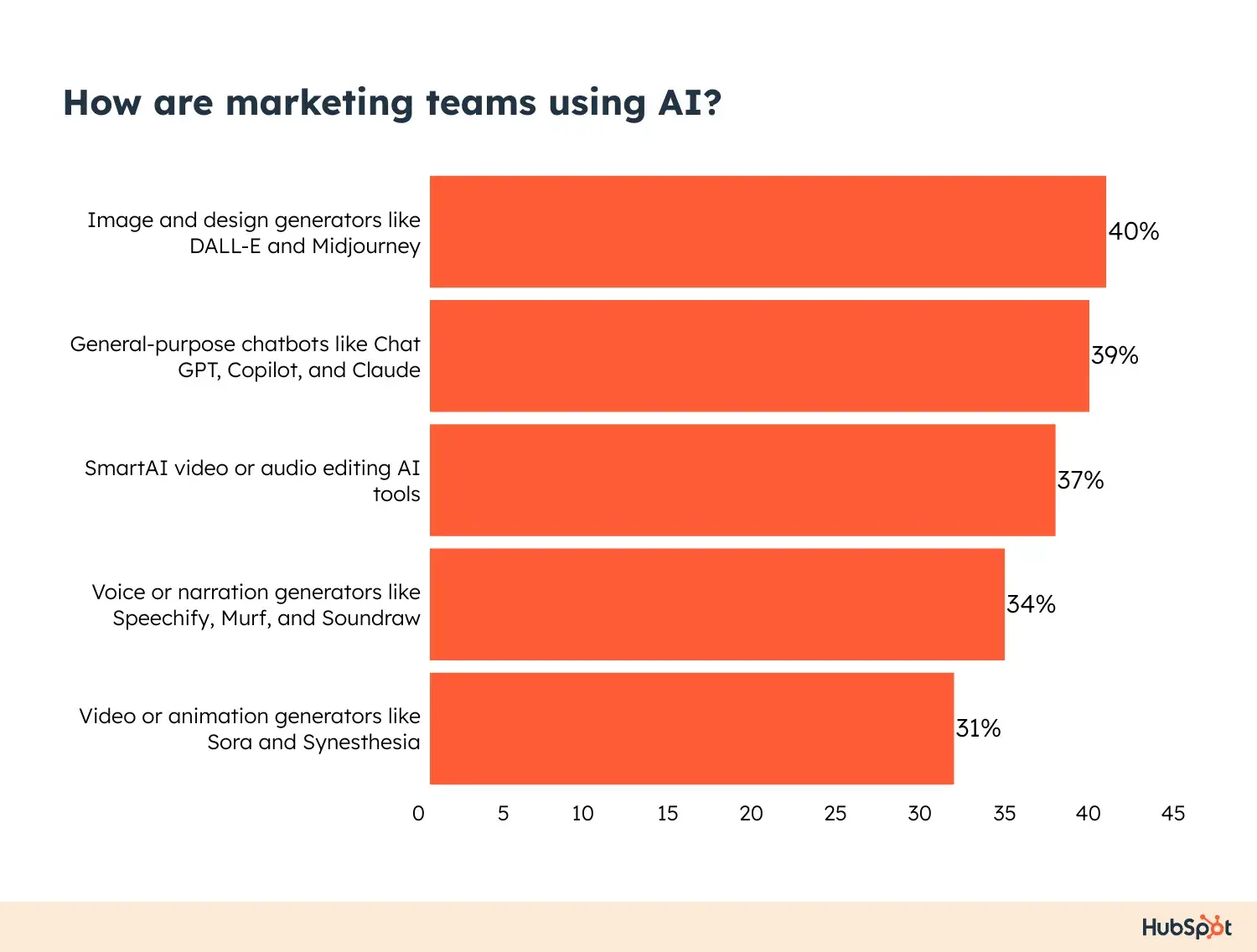
Wondering how people are using AI? Here’s what our numbers show, ranked from 1-5 — of note, the numbers are similar across the board between B2B, B2C, and nonprofits:
- Image and design generators like DALL-E and Midjourney (40% of marketers).
- General-purpose chatbots like Chat GPT, Copilot, and Claude (39%).
- SmartAI video or audio editing AI tools (37%).
- Voice or narration generators like Speechify, Murf, and Soundraw (34%).
- Video or animation generators like Sora and Synesthesia (31%).
How AI Is Already Reshaping Work
Some of the biggest shifts include:
- Sales teams using AI to find new leads and analyze sales calls faster.
- Content creators generating and repurposing multi-channel content faster than ever.
- Customer service using AI chatbots to handle common questions before escalating issues to human representatives.
- Finance teams are automating everything from invoice matching to fraud detection.
In fact, I’m working with a team to implement AI into sales/marketing alignment processes to feed warmer leads to salespeople so they spend less of their day on outbound email or cold calling. That same team is also exploring how to use AI to perform SEO optimizations at scale.
Such functions lead to greater ROI for businesses, and this is shooting the AI optimism off the roof, according to our latest State of AI report.
The numbers tell an optimistic story.
The WEF’s 2025 report shares its expectations that:
- 86% of companies will see AI-driven transformation by 2030.
- 92 million existing jobs will be displaced.
- 40% of current job skills will become outdated.
- 170 new jobs will emerge due to AI.
That’s a net growth of 78 million jobs! They’ll just look a little different from what we see today.
Leaders are still betting on human experience.
HubSpot co-founder and CTO Dharmesh Shah has a positive outlook on the future of AI. In fact, he thinks bots and AI will make us better at our jobs and more secure in our careers, not the other way around.
Brand builder Samyutha Reddy thinks similarly. Her teams regularly use generative AI, but she’s still actively hiring because AI can’t replace the human experience.
“We value writers in our society because they’re able to give us a thought-provoking human perspective on the world… It’s about humans sharing opinions on very real topics that help build your perspective on how you feel about something. So an AI could really never replace that human perspective,” she says.
And she’s right, in my opinion. That perspective — your perspective — is the value each of us brings. Additionally, it’s my belief that AI is raising the bar. Mediocre content and execution just don’t cut it anymore.
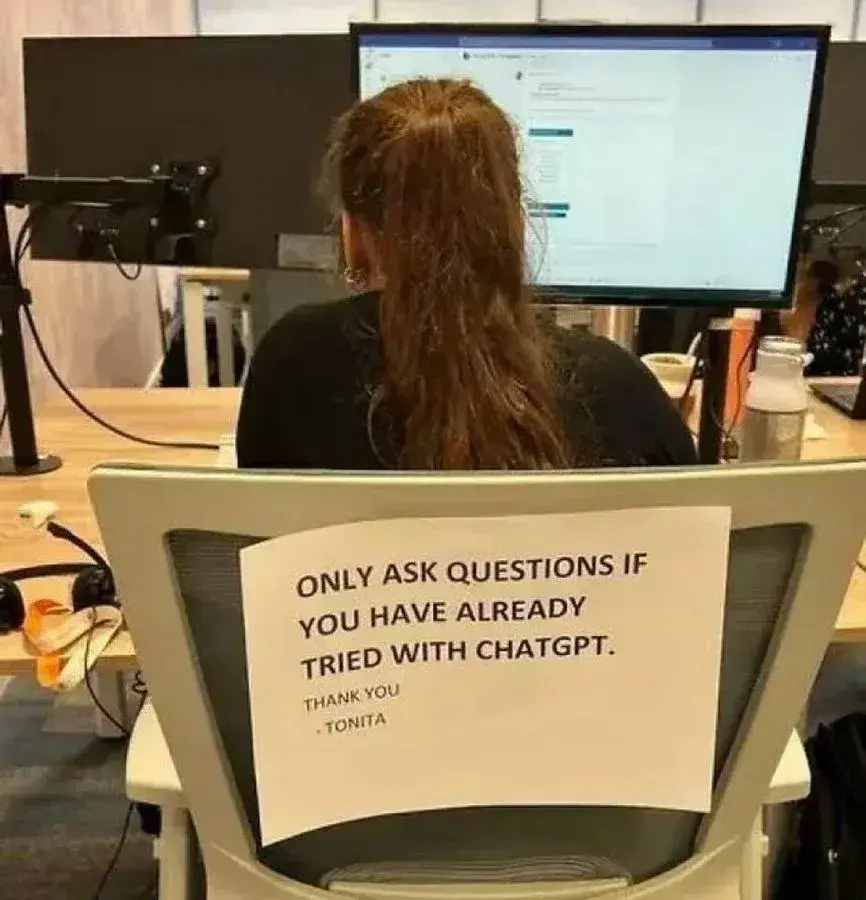
What’s holding teams back from using AI?
No discussion of what jobs AI will replace is complete without exploring why people are resistant to implementing this evolving technology.
In our 2025 State of AI in Marketing report, marketers shared the biggest roadblocks holding back full-scale implementation.
- Data privacy concerns (43%).
- Training time and investment (39%).
- Too many tools that do similar things but don’t integrate well (35%).
- Integration challenges with existing or legacy systems (33%).
- Preferring different tools from what their company invests in (26%).
- Resistance to change within the organization (26%).
- Job security concerns (25%).
- Compliance concerns (22%).
I think it’s telling that resistance to change and job security concerns are relatively low on the list. More importantly, nearly 10% of people say they haven’t experienced barriers to adoption in the past year.
What jobs can AI replace?
Even with this positive outlook, change can be scary. In fact, a 2025 PEW study shows that 52% of U.S. workers are worried about AI affecting their jobs, and 32% think it will lead to fewer opportunities.
So if you’re one of the more skeptical people wondering if your job is at risk of being replaced by AI, you’re in good company.
But instead of letting fear drive you, let’s use data and pattern analysis to start answering your question. Then, look for new ways to develop the skills you need to feel confident in your future prospects.
Assembly Lines and Algorithms — Oh my!
In the past, concerns over machines replacing human jobs rose with the automation of physical tasks common in factories and warehouses. Now, the same is happening with AI and the fear of it replacing human intelligence in the workplace.
“Think about your position and what your position will transform to in the next 12 to 24 months. Whether you like it or not, this is happening, and it is going to happen so fast that it will change the fabric of our society. If you haven’t already done so, search for whatever your title or your position is and look at all the [AI] tools that exist within that,” Duran Inci, CEO at Optimum7 says.
He’s not wrong. Before ChatGPT hit the mainstream in 2023, AI was already being integrated into business operations — especially by leaders looking to increase productivity through automation. It’s just that it was much more technical in nature.
Between 2012 and 2024, jobs with AI-specific skill requirements increased sevenfold. In contrast, regular jobs only doubled within the same timeframe. But while the demand for professionals with technical AI skills may be on the rise, traditional jobs with high exposure to AI may be left on the back burner.
What makes a job vulnerable to AI?
The more AI-exposed tasks your role includes, the greater the risk of automation.
While people often fear a future dominated by bots, most American workers aren’t there yet. The 2025 Pew report shows some different numbers from the HubSpot State of AI in Marketing report.
However, it’s my opinion that this can be explained by the fact that HubSpot’s numbers are largely from tech-forward companies more likely to adopt AI and new technologies. What’s more, the people we surveyed are primarily marketers who must embrace new technologies to help their companies maintain a competitive edge.
Here’s how the numbers from Pew and HubSpot compare:
|
Pew |
HubSpot |
|
|
Workers who say they rarely use AI in their jobs, if ever. |
64% |
34% |
|
Workers who say some work is done with AI. |
16% |
64% |
Additionally, Pew’s data shows that:
- 31% of non-AI users say some of their jobs could be done with AI.
- 45% believe not much (or none) of what they do can be automated.
So even while adoption is growing, people’s exposure to AI depends widely on demographic factors that include age, industry, education, and job type. Check out the breakdown below.

Those more likely to be exposed to AI have job tasks like:
- Gathering and processing information.
- Analyzing and evaluating data.
- Making decisions or solving problems.
- Adhering to compliance standards.
And these are the jobs that AI can replace. Not entirely, but to a significant extent, affecting 30% of current worked hours by 2030.
“I would say 40% to 50% of creative and generic positions are already 80% there, and you will lose millions of dollars in the next 10 to 20 years if you don’t already have the plus version of ChatGPT and if you don’t already use it,” Inci continues.
Common Traits of AI-Replaceable Jobs
Across industries, the jobs most vulnerable to AI tend to involve:
- Repetitive tasks or clearly defined workflows.
- Data-heavy decision-making that doesn’t require nuance.
- Low levels of human interaction or emotional intelligence.
- Standardized outputs that can be templated or scaled.
Of course, these roles won’t disappear overnight. But as automation becomes more capable and cost-effective, many of these functions may shift.
So, what kinds of jobs are on the chopping block? Let’s look at the top 10 most at-risk next.
10 Jobs AI Will Likely Replace
- Telemarketing
- Bookkeeping Clerks
- Compensation and Benefits Managers
- Receptionists
- Couriers
- Proofreaders
- Computer Support Specialists
- Market Research Analysts
- Advertising Salespeople
- Retail Salespeople
If your current role involves repetitive tasks, clearly defined workflows, or heavy data processing, this is your sign that it’s probably time to think ahead.
There’s some positive news — you don’t have to start from scratch (though you can, if you’re so inclined).
In my experience, your deep knowledge in your space means that you have a great deal of value to employers and clients. You just need to learn how to work with AI so you can shift into more advisory, strategic, or system-level roles.
Keep that in mind if you find your job on this list.
1. Telemarketers
Risk of Automation: Imminent
This role is almost entirely script-based, which makes it easy to replicate with voice AI and robocalling systems. With low conversion rates and high burnout, it’s one of the first places companies look to automate. Telemarketing jobs are expected to decline by 18.2% by the year 2032.
Ideas for next steps: If you’re a successful human telemarketer (and you’re definitely human if you’re looking for a career!), you’ve probably got great social perceptiveness and emotional intelligence. You might want to consider moving into a sales development or customer success role that requires a more human touch.
By learning how AI tools like chatbots or CRM assistants work, you can position yourself as the person who manages, not competes with, automation.
2. Bookkeeping Clerks
Risk of Automation: Imminent
Most bookkeeping is already being automated. Software like QuickBooks and Xero can categorize expenses, reconcile accounts, and generate reports with little to no oversight. Jobs in this role are expected to decline by 4.5% by 2032. If the bulk of your role currently handles manual, repetitive bookkeeping tasks, it’s a good time to expand your knowledge.
Ideas for next steps: You can become a great partner for clients and employers who need help understanding what to do with the information so they can make sound financial decisions. By learning how AI and automation tools work — and understanding the data they produce — you can become the person who interprets results and guides smarter business decisions.
3. Compensation and Benefits Managers
Risk of Automation: Moderate to High Risk
As companies grow, especially across multinational markets, a human and paper-based system can present more hurdles, time delays, and costs. That’s why there is a 64% chance of full automation within the next two decades. Automated benefits systems can save time and effort by providing benefits to large numbers of employees, and companies like Ultipro and Workday are already being widely adopted.
Ideas for next steps: Focus on the human side of HR — strategy, change management, and employee experience. You can also dig deeper into total rewards strategy, where contextual decision-making and cross-team collaboration are harder to automate.
4. Receptionists
Risk of Automation: Imminent
Pam predicted this back on The Office, but in case you’re not a fan, she said automated phone and scheduling systems can replace a lot of the traditional receptionist role — especially at modern technology companies that don’t have office-wide phone systems or multinational corporations.
Ideas for next steps: If you thrive in a people-facing role, consider pivoting into office management, employee experience, or event coordination — fields where emotional intelligence and logistics still require a human in the loop.
5. Couriers
Risk of Automation: High
Major companies are investing in drones and robots, so it’s only a matter of time until this space is dominated by automation altogether. (Can you imagine getting a pizza delivered by drone?)
Ideas for next steps: If the road is still the place for you, there are plenty of people who make a living as personal concierges, and that probably has some staying power due to the personal touch. Otherwise, getting into things like logistics and supply chain could be a great way to take what you’ve learned and future-proof yourself.
6. Proofreaders
Risk of Automation: Imminent
AI writing assistants like Grammarly, Hemingway, and ChatGPT already handle grammar and clarity. Tone still is hit or miss in my experience. While you still need human oversight to make sure these are right, it’s likely these jobs will be going away soon.
Ideas for next steps: If you’re a skilled proofreader, lean into roles that require contextual editing — such as content strategy, editorial development, or brand voice. You can also offer human review of AI-generated content, where nuance still matters.
Gill Hill, an editor and brand voice specialist, feels secure in her role, saying that, at least for now, “AI can’t sound human. That’s why it gets tone so wrong. Tone is fundamentally the communication of emotion. And emotion is (for now) a purely human concept.”
7. Computer Support Specialists
Risk of Automation: Moderate to High
This is one of those tricky ones. The field is projected to grow by 6.2% by 2032. However, automation will play a big role here with AI-powered help desks, like those powered by ChatGPT, which can now resolve common Tier 1 tech issues without human involvement. Many support tickets are being triaged and sometimes even solved by bots.
Ideas for next steps: Want to stay in this space? Focus on getting the higher-tier skills to stay a few steps ahead of AI advancement so you can handle the trickier issues. Better yet, work towards complex problem-solving or systems-level IT. Roles in infrastructure, cybersecurity, or enterprise tech require judgment, interpretation, and cross-functional collaboration that AI can’t easily replicate.
8. Market Research Analysts
Risk of Automation: Moderate to High
Market research analysts play an incredibly important role in developing messaging, content, and products, but automated AI and surveys can compile this information more and more efficiently.
Ideas for next steps: While automated research tools can have a leg up in scale, speed, and accuracy, human researchers have hands-on knowledge and personal experience that an algorithm can’t develop. Human researchers who use automation tools can create a more effective process.
9. Advertising Salespeople
Risk of Automation: Moderate to High
As advertising shifts away from print and TV and towards web and social media landscapes, people simply aren’t needed to manage those sales for marketers who want to buy ad space.
Social media platforms make it easy for people to buy space through free application program interfaces (APIs) and self-serve ad marketplaces, removing the salesperson and making it faster and easier for users to run their ads.
Even the ads themselves are leaning more and more into artificial intelligence. When looking at actors or voice actors, we’re also seeing a trend of companies using AI voices for advertisements, like commercials.
Ideas for next steps: Specialize in campaign strategy, performance consulting, or brand partnerships, all of which are areas that require relationship-building and tailored insight. Understanding how AI optimizes ad performance can also position you as a smarter strategist.
10. Retail Salespeople
Risk of Automation: High
Companies are democratizing the shopping experience with features like self-checkout, and the modern buyer is much more internet-savvy and more likely to do internet research and make a buying decision on their own. I was blown away at Disneyland this year when I only had two interactions at their retail store: One when someone greeted me and asked if I needed help finding something, and the other when someone checked my receipt on the way out.
Ideas for next steps: On the other hand, the care a retail salesperson brings during a 1:1 interaction differs from automated and unemotional support, and many consumers prefer to interact with humans during the support process.
To truly uplevel your skills, focus on roles that deliver high-touch, human-centered service — like personal styling, experience design, or community engagement. The best retail workers can evolve into brand ambassadors or CX specialists that AI simply can’t replicate.

What jobs are safe from AI?
In addition to the millions of new jobs expected to result from AI and automation advances, certain roles remain largely immune to this. Going by the exposure scale, these jobs have medium to low exposure to AI.
This is because their most important work activities range from:
- Training and teaching others.
- Performing general physical activities.
- Repairing and maintaining equipment.
- Establishing and maintaining interpersonal relationships.
- Resolving conflicts and negotiating with others.
- Developing and building teams.
- Selling or influencing others.
- Judging the qualities of objects, services, or people.
There’s so much more. For example, it’s hard to replace firefighters with robots (though they could potentially make the job safer!).
These activities revolve around uniquely human traits, like emotional intelligence, contextual creativity, discernment, and manual labor that AI cannot replicate yet. This is also echoed by the World Economic Forum’s (WEF) top 10 work skills of 2025, some of which include:
- Analytical thinking and innovation.
- Critical thinking and analysis.
- Creativity, originality, and initiative.
- Leadership and social influence.
- Complex problem-solving.
And this is true for business leaders and their hiring practices. At GuerrillaBuzz, co-founder Yuval Halevi says they rely mainly on human creativity to drive their marketing efforts. “We apply AI mainly to repetitive and time-consuming tasks, removing the monotony and freeing up time for more creative work.”
In the words of Ian Shine at the WEF, these jobs are safe because “one of the human brain’s biggest advantages over AI is the fact that it is attached to a real human body.”
Without further ado, here are some jobs that are safe from AI.
10 Jobs AI is Not Likely to Replace
- Human Resource Managers
- Sales Managers
- Marketing Managers
- Public Relations Managers
- Chief Executives
- Event Planners
- Writers
- Software Developers
- Editors
- Graphic Designers
1. Human Resources Managers
It’s kind of in the name, but your company’s Human Resources department will likely always need a human at the helm to manage interpersonal conflict with the help of non-cognitive and reasoning skills. Problem solving, contextual understanding, and unique business knowledge also make a human better equipped for this job.
The field is projected to grow 7.3% by 2032 as companies scale and need more robust structures for supporting and helping employees.
2. Sales Managers
Sales managers need high emotional intelligence to hit their monthly quotas, network and collaborate with customers, and motivate and encourage the larger sales team. Managers also have to analyze data and interpret trends. The high levels of intelligence required and the constant need to adapt to new situations make this role safe from automation.
3. Marketing Managers
Marketing managers have to interpret data, monitor trends, oversee campaigns, and create content. They also have to nimbly adapt and respond to changes and feedback from the rest of the company and customers, making this another human-forward career AI isn’t quite ready to replicate.
A unique contextual understanding and previous business experience make a human stand out from an automated system.
Interestingly, of the marketers we connected with for our 2025 State of Marketing Report, less than 20% saw AI taking over most marketers’ job duties. The vast majority agree that AI will help marketers do their jobs, either as a partner (50%) or by simply taking over the menial tasks (21%).
And those using platforms like HubSpot’s Breeze AI are likely to come out ahead.
4. Public Relations Managers
Successful public relations (PR) managers rely on a network of relationships and contacts to procure press placements and buzz for the companies they represent, making this another completely safe role.
PR managers who have to raise awareness around an issue or mission need a particularly human touch to raise funds or get people to participate in a campaign, too — and jobs are expected to grow 7.6% by 2032.
Most importantly, PR managers are often on the go, attending events and being on hand to provide support if need be — a computer will never be able to do this.
5. Chief Executives
It’s nearly impossible to automate leadership — after all, it’s hard enough to teach it. Chief executives must inform broad strategy, represent companies’ missions and objectives, and motivate huge teams of people working for them. Executives also have years of prior experience that make them successful.
Companies may answer to stakeholders and boards of directors, who likely wouldn’t want a robot giving them an earnings report, either.
6. Event Planners
Event planning is a growing field, and if you ask anyone on our events team here at HubSpot, whether you’re planning an event for employees, customers, or an industry event with tens of thousands of attendees, the planning process has many, many moving parts involved.
Planners have to coordinate and negotiate with vendors, contractors, and freelancers to make things come together, and the organizational and people skills involved will make this another near-impossible role to automate.
Planners also attend events, ready to step in and troubleshoot on the spot. An automated tool simply couldn’t be present.
7. Writers
Writers have to ideate, create, and produce original written material, something that AI writing tools have not yet been able to replicate in the same way as humans (see recent BuzzFeed controversy about AI-generated travel articles).
There are also many types of writers, some of whom might be more at risk. An experienced journalist will likely be favored over AI, but a freelance copywriter may no longer be needed by a business that now uses AI to write Instagram captions. However, if they can shift to a more strategic role, they’ll be well-positioned.
As my friend Aly Goulet, a B2B copywriter and content strategist, says, “AI didn’t kill content. It challenged us to create better content.”
8. Software Developers
Software engineering and development is complex enough for human beings, and the time and skill investment needed to create applications, software, and websites will be tough to replicate — especially since developers need to execute perfectly to create great products for customers.
The field is expected to grow by 30.3% by 2032, so if you’re a software developer, you’re sitting pretty for now.

9. Editors
While the automated proofreading technology mentioned previously can take a load off, editors have to review writers’ submissions for clarity, accuracy, comprehensiveness, and originality.
Some software can spot-check for clarity and scan for plagiarism, but the editor role must be carried out by a human in order to read work as another human would.
Today, 86.33% of marketers who use AI, for example, always make edits to the content that AI produces, according to our State of AI in Marketing survey.
10. Graphic Designers
Image generators like Midjourney and DALL-E make it easy for people to create what they want. And with ChatGPT’s new image capabilities, it’s getting easier. But I don’t see it replacing graphic design anytime soon. It’s an artistic and technical field best suited for someone with fine arts training and experience. Like writing, graphic design work must be original and tailored to a unique use case.
If a graphic designer is working with a business, building a relationship between both parties throughout the design process is also required. Plus, some image creators have been found to plagiarize artists’ work — a lawsuit is likely the last thing people want.

Navigating Artificial Intelligence
Kate O’Neill, the author of Tech Humanist and founder of KO Insights, explains that jobs that require emotional intelligence will be safer in the immediate future:
“This is going to be a continuously moving target, but for the time being, what AI can’t do well is use emotional intelligence, understand situational context, make judgment calls, and generally see nuance and meaning like we do.”
She goes on to add, “That means any kind of job that benefits from these kinds of human attributes is better off done by a human. A computer or robot may assist you in performing efficiently, but for now, you’re the one who adds the expertise on how to perform appropriately.”
Yuval Halevi echoes this from another angle: “Having knowledge that’s beyond the obvious is crucial. AI tools like ChatGPT and Gemini can sometimes provide inaccurate or misleading information.
“Without a deep understanding of your specific area, you might be misled or produce subpar work. Expertise ensures you can critically evaluate AI outputs and maintain high-quality standards.”
In short, expertise still matters. Your ability to think critically, question the output, and bring meaningful insights to the table is what sets you apart, especially in jobs where AI plays a supporting role.
How to Future-Proof Your Career
The good news is that AI isn’t eliminating jobs at the rate many people fear. While some of the roles I identified as most at-risk above will likely see some reduction in force, it’s likely that many of these fields will simply shrink by attrition. And remember, the WEF still expects to see a net gain of 78 million jobs by 2030.
The influence of AI on employment is growing. A study shows that 38% of companies will replace some roles with AI in 2025. It also showed that 87% consider AI experience beneficial, and 67% believe that employees with AI skills will have more job security.
On a Marketing Against The Grain Episode, Kipp Bodnar, HubSpot’s chief marketing officer, says, “As I think about the evolution of AI, I think about one of the things that’s going to go part and parcel with it is the need to be amazing at re-skilling our workforce all around the world.” (Listen to the full episode here.)
Re-skilling doesn’t mean preparing for the worst. Most jobs expect employees to engage in some sort of professional development, so this might be routine for you. According to the WEF study:
- 77% of employers say they plan to reskill their workforce to work with AI, not against it.
- 29% of workers are expected to be upskilled in their current roles.
- 19% will be redeployed into new opportunities at their company.
What does that look like for you?
You don’t need to abandon your field or career. Most jobs already expect employees to keep learning — and this is no different.
You might:
- Explore AI tools that apply to your role (like HubSpot’s content assistants or Jasper for marketing).
- Take a course to deepen your expertise in something adjacent to your current focus.
- Learn how to work with AI instead of around it, whether that means testing tools that speed up routine tasks or helping your team adapt their processes.
And, if your job does shift over time? Re-skilling gives you leverage. You’ll have both domain expertise and modern tools at your disposal — and that’s the sweet spot in any evolving career landscape.
For example, you could explore different AI tools and how to leverage them in your day-to-day role. HubSpot’s AI tools, for instance, give you access to a suite of AI tools that could perform functions like content creation, data analysis, and even build a chatbot.
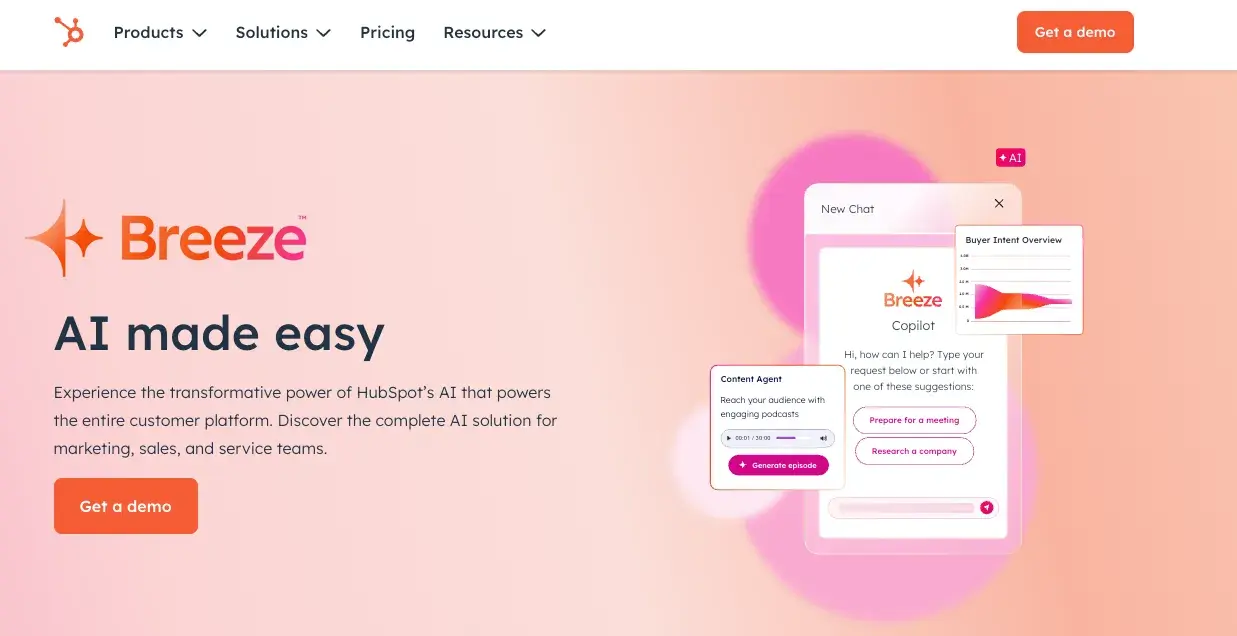
Or you could take a course to learn a new skill. As Shah said above, AI’s most significant impact will likely be helping us be more effective in our careers.
But, if your job is impacted, having taken the time to re-skill leaves you more prepared for future opportunities where you present yourself as a multifaceted candidate.
Learning from others is another great way to stay on top of the changing AI landscape and learn new skills. HubSpot has spoken to experts who have leaned into AI and incorporated it into their processes, and their insight is a valuable way to get ideas for re-skilling.
Here are some helpful resources:
- Use AI To Accelerate Your Career While Others Panic (Complete Guide) (Podcast)
- How AI Will Change Podcast and Video, According to Riverside’s Head of Marketing
- 7 Creative Ways Sales Reps Are Using AI
- Here’s How HubSpot’s Web Strategy Team is Using AI
- Generative AI in Marketing: How It Fits Into Your Strategy, According to Jasper's Head of Enterprise Marketing
Your experience is your greatest asset.
All technological revolutions impact how people work, and I think it likely that AI will simply follow this pattern. The biggest impact will be streamlining rote and mundane tasks to save us time.
People who adapt, stay curious, and keep learning will thrive. I’ve often said that the value you bring isn’t in the mechanics of what you do, but in the lived experience you bring to the table. So even if your job shifts due to AI, your best bet is to see AI as a collaborative partner that makes you better at what you do.
The more you learn to work with AI, the more irreplaceable you’ll become. To stay up to date on AI and the trends, HubSpot’s State of AI pillar houses all the information you need.
Editor's note: This post was originally published in June 2017 and has been updated for comprehensiveness.
Artificial Intelligence


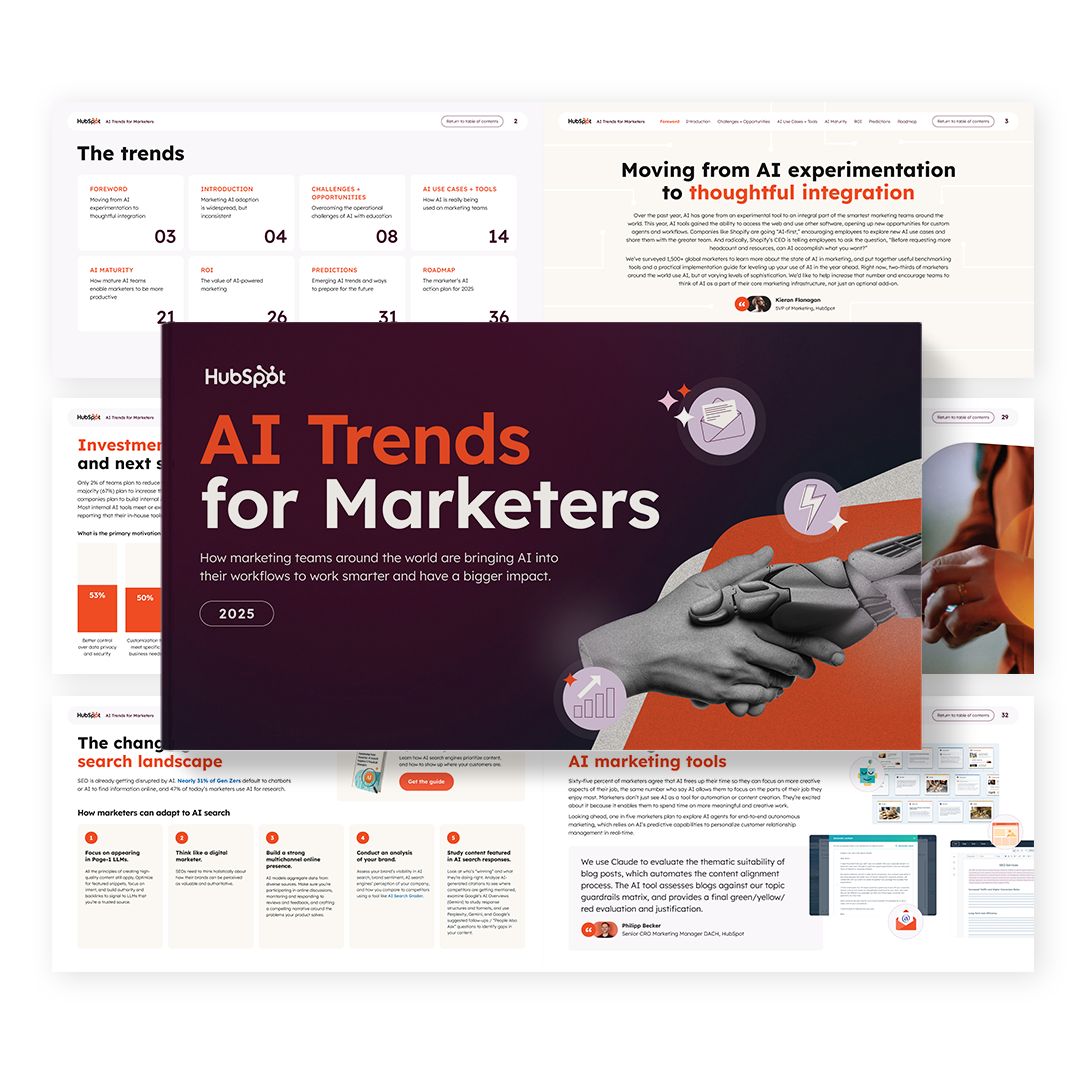

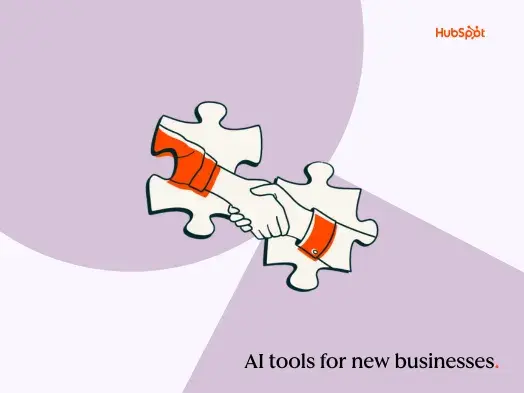
![AI email subject lines that drive 3x more revenue and actually convert [+ exclusive insights]](https://53.fs1.hubspotusercontent-na1.net/hubfs/53/ai-email-optimization-1-20251014-4500151-1.webp)
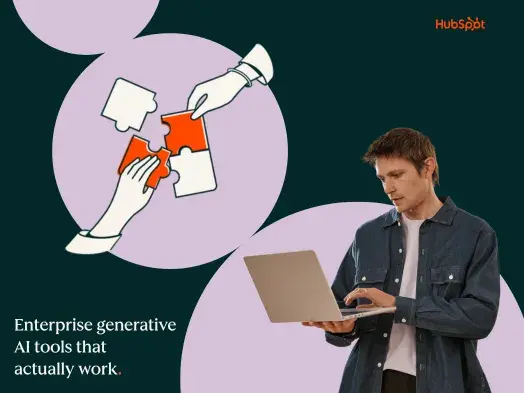
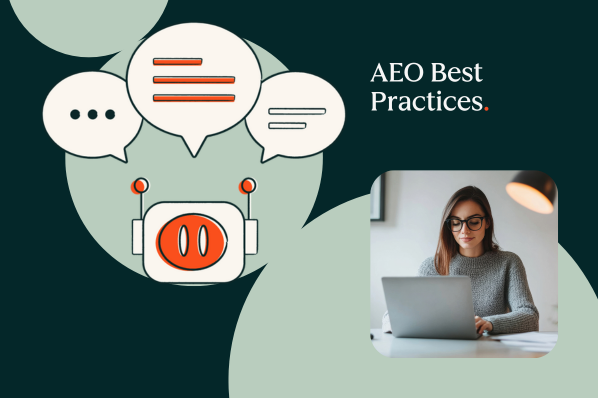




-1-20250905-2237709%202.webp)